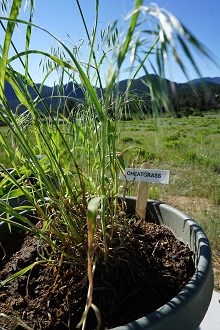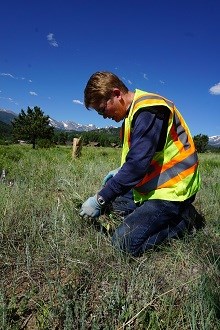|
Community Weed Pull If you're like me, the thought of pulling weeds takes you back to childhood, when you made wishes upon puffy white dandelions before exhaling a big breath of air to scatter their seeds all across your backyard (sorry Mom and Dad). However, this weekend I found out there is so much to learn about the pesky little plants that pop up through the soil year after year. My day started off tagging along with Brian Kolokowsky and Mary Lane Poe from the Resource Stewardship division to meet up with members from the Estes Land Stewardship Association (ELSA) and community volunteers who were taking part in the annual event. Our task for the morning was to tackle the grassy area between High Drive and Moraine Ave. which is home to many native plants that are forced to share space with troublesome weeds. 
NPS 
NPS

NPS Another volunteer, who is anything but a rookie, came out to lend a hand along with her expertise. Hattie Schetzsle, whose husband is the former deputy superintendent at RMNP, joined us for her fourth time at the weed pull event. I asked Hattie what makes her interested in helping and how she knows so much about exotic plants and she responded enthusiastically with, "Someone has got to do it and I do a lot of weed pulling!" Montana is where Hattie got her start pulling knapweed and she now devotes many hours working on her land and making her way out past property lines. Every time I was unsure about whether I was about to uproot a native plant or an exotic weed, Hattie made sure the coast was clear.
It is safe to say that we could not have accomplished as much as we did in those few hours without the help of all the volunteers who came out. The paper bags we filled will be taken to Glacier Basin where they will turn to ash in the air curtain burner that keeps smoke and fumes contained to protect our park.
As for me, I have our knowledgeable volunteers to thank for their time, positivity and the urge I had to pull the horary alyssum I spotted on my walk home that day.
|
Last updated: July 24, 2015
